#Joe pye weed white
Text

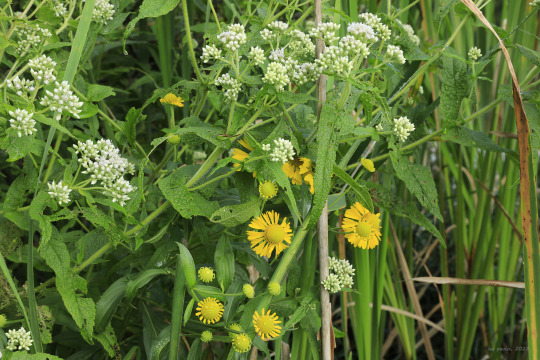




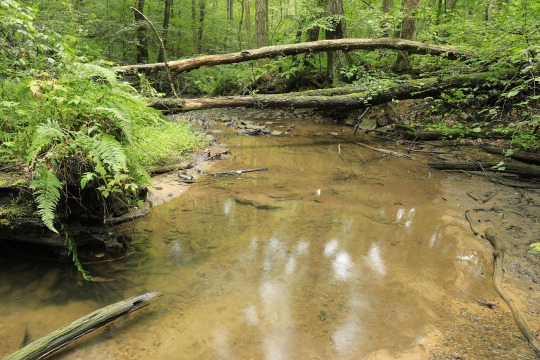


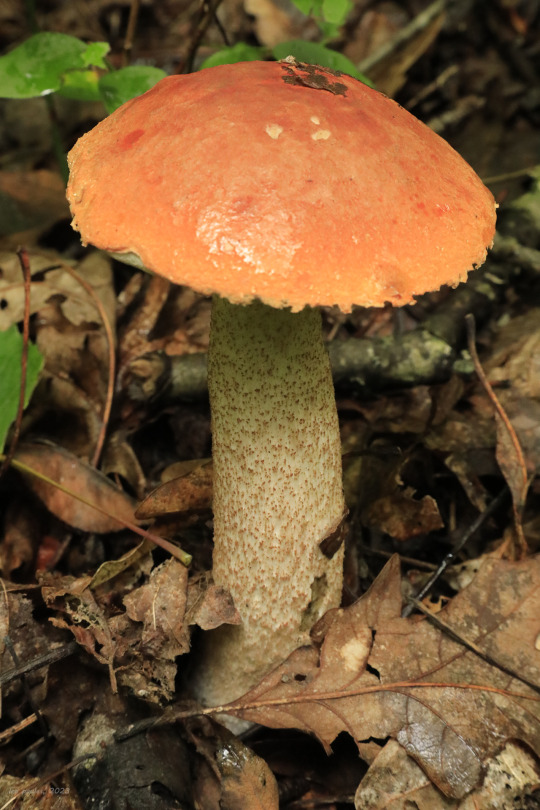
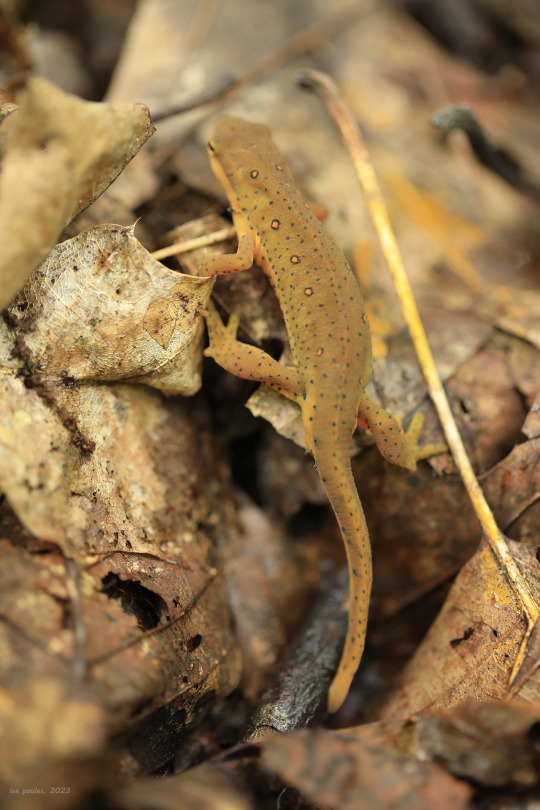


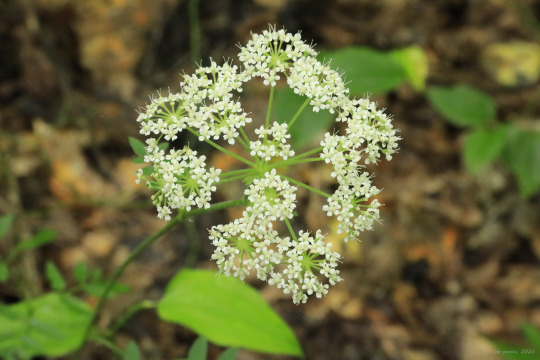


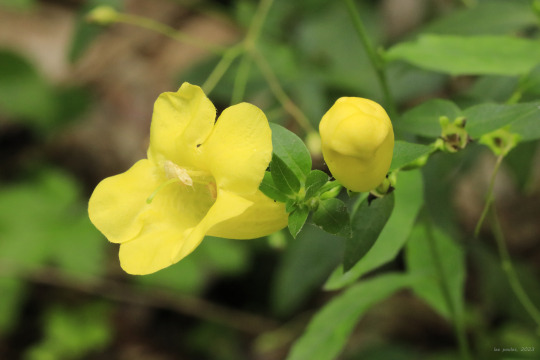

The one thing that excites me more than a pop-up summer thunderstorm is a walk in a damp, dripping, glowing-green forest after the storm has passed. The forest's living essence is made all the more real and immediate by the intoxicating perfume of decaying things, creatures flitting like ghosts through the leaves and underbrush, and clinging raindrops unleashed from the treetops by an evanescent breeze. Photos above are from a hike this morning on Glade Run Trail in Coopers Rock State Forest.
From top: common boneset (Eupatorium perfoliatum), which is closely related to Joe Pye weed, and sneezeweed (Helenium autumnale); the deep purple-red berries of common elderberry (Sambucus canadensis); hollow Joe Pye weed (Eupatorium fistulosum), which can attain a height of 7 to 8 feet; eastern tiger swallowtail (Papilio glaucus), whose tattered wings show the wear and tear of summer errands; a colony of gregarious fungi, perhaps cross-veined troop mushroom (Xeromphalina kauffmanii), which grow in huge numbers on decaying hardwoods; a red-capped bolete, perhaps Leccinum longicurvipes, which is symbiont with oak trees; an eastern newt (Notophthalmus viridescens); white wood aster (Eurybia divaricata); bigleaf aster (Eurybia macrophylla); cowbane (Oxypolis rigidior), also known as common water dropwort; bluestem goldenrod (Solidago caesia), a woodland goldenrod with flowerheads in the leaf axils; and Appalachian oak-leach (Aureolaria laevigata), also known as smooth false foxglove, which is semi-parasitic on oak tree roots.
#appalachia#vandalia#west virginia#wildflowers#flora#summer#coopers rock state forest#glade run trail#common boneset#sneezeweed#common elderberry#hollow joe pye weed#eastern tiger swallowtail#butterfly#lepidoptera#eastern newt#amphibian#fungi#bolete#white wood aster#bigleaf aster#cowbane#common water dropwort#bluestem goldenrod#blue-stemmed goldenrod#wreath goldenrod#appalachian oak-leach#smooth false foxglove
137 notes
·
View notes
Text
kinda fascinated by how there appears to be two different firefly species in my back yard now. One is the normal fireflies everyone knows with the yellow glow, and the other seems a little bigger and has a green glow, giving three flashes in quick succession.
They hang out around the meadow a lot. No success in catching the green-glow fireflies though because they tend to fly a little higher and have longer intervals in between their three-flash displays.
I saw a couple bumble bees today too! I am just so happy because since i've been tending to the Meadow, it is so full of life. Every day I see something new I've never seen before.
I need to get out there and take some proper photos, lol. I took a photo of my yarrow earlier but I haven't really been documenting the progress in pictures and I probably should
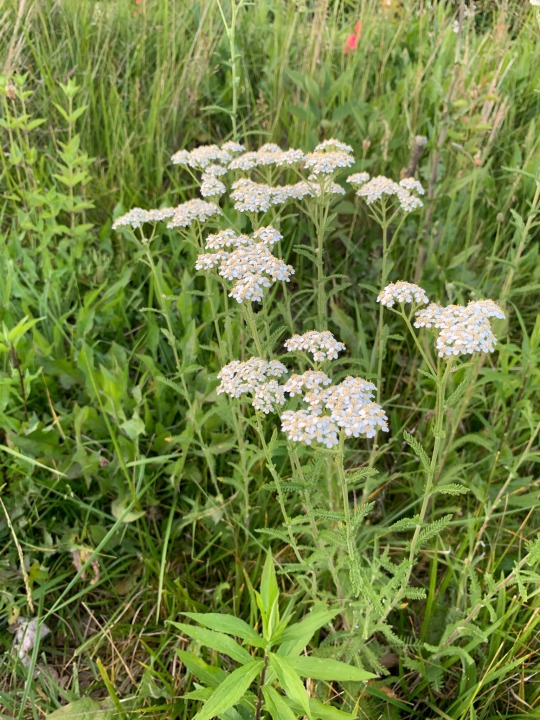
the yarrow was just kinda yanked up from an existing vegetative colony on the side of the road and stuck in a pot, I have yet to kill any yarrow i've randomly pulled up. Ridiculously easy plant to propagate. The plant in the center foreground is some kind of pink aster (i got it from the edge of the pavement in my neighborhood) and in the background you can see beebalm (dad ordered from a website) white boneset (also kidnapped from the edge of the pavement) chicory (volunteered) broomsedge bluestem (volunteered) Joe-Pye weed (dad also ordered from a website) and there should be a goldenrod or two (volunteered)
I have the benefit of having blessing to dig up plants from work, but most of the plants in here were just sorta rescued from gravel or asphalt where they somehow managed to sprout.
I now have dozens of evening primroses that all came from one single evening primrose that I literally pulled out of a crack in the pavement on the side of the road, planted in a pot and then in my front yard flower bed where it bloomed gorgeously and made loads of seeds. (I pulled another one out of a pothole early this year and it's also thriving!)
On a street down the road, there is literally a thriving population of Ruellia growing in the seam of the pavement along the curb and I'm growing like 4 of them.
That street is also where I got the blue mistflower originally I think, in some gravel next to a drainage ditch. The blue mistflower ALSO went to seed and made at least 2 new seedlings in some dirt this spring, 30 feet away from where I originally planted them.
Also we got some random oxeye daisy volunteers this year? And morning glory? I'm wary of the morning glory (that shit can take over) but my mom likes it sooooo
You know what you should really learn to identify though? Sedges. You can just rip those suckers out of the ground they don't care. The other day I was at the park tearing sedges up from the gravel path and putting them in a baggie with a wet paper towel. Same park where I pulled my Wingstem last year! I'm going to get in trouble one of these days probably
Don't go ripping plants out of their habitat where they're happy, but if some poor seedling popped up in a pile of gravel, that's free plant baby!
774 notes
·
View notes
Text
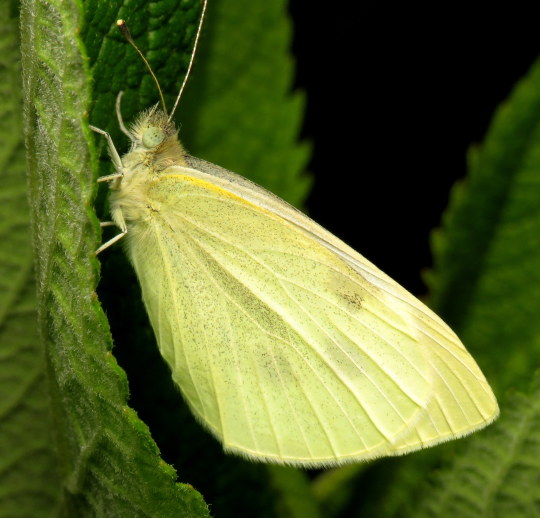
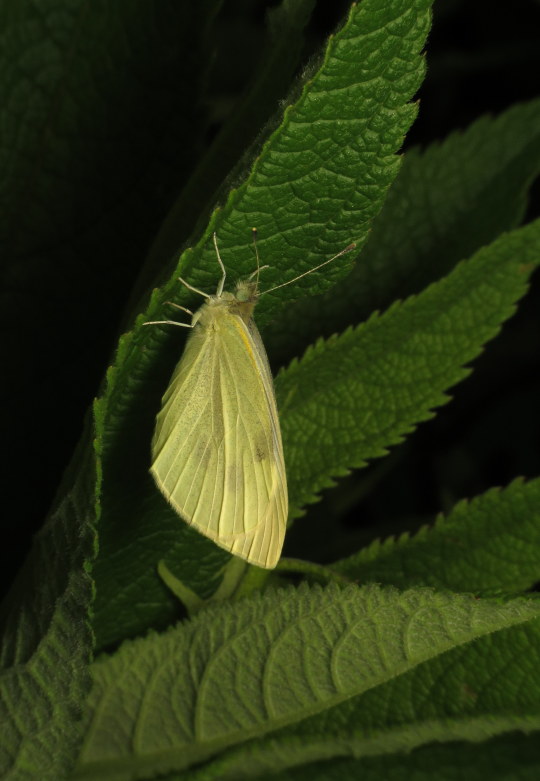
Bug of the Day
Some say that moths are just nighttime butterflies, but here is an actual nighttime butterfly - a cabbage white, Pieris rapae - that I caught with the flashlight, hanging out on my joe-pye-weed. What a cute little jerk-eating-my-brassicas :-).
#cabbage white#butterfly#Pieris rapae#Pieris#Pieridae#Lepidoptera#insect#day moth#bug of the day#BotD
144 notes
·
View notes
Text
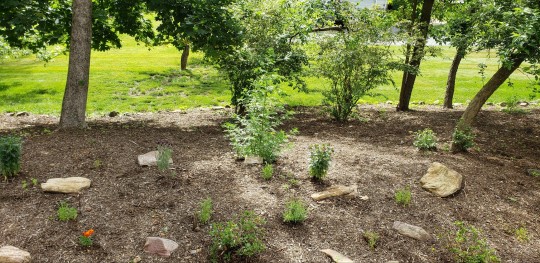



My Side Garden Over 4 Years
In 2019 the last of the 15 Ash Trees adjacent to my mother's home were taken out and I had decided to garden now that I had access to a yard again. The soil here is very rocky, prior to being constructed the side of this yard was a forest on the property line of a farm, that's why our ash were massive before they succumb to the borer.
The first year I planted some Perennials from a box-store and threw a random 'wildflower' seed mix in and unsurprisingly most of them died (although sweet-williams and cornflower persist which is fine with me)
The next year a whole bunch of annual cosmos and Zinnia took over but the only surviving perennials were native plants, after that I got more into native plants and got some native seeds from an adjacent field, Prairie Moon, and the forest that I spread. Then I got some native perennials from a local grower or took some divisions from my aunt (and grew some marigolds to keep the deer away).
The next year everything established and I did a layer of mulch over leaf litter to improve the soil a little, I discovered that in the coming drought this retained a decent amount of moisture for my young plants, I also noticed the diversity of insects and bird life that these plants brought. Our Yard was the only one with monarch caterpillars, constantly churning with butterflies, I noticed all new stingless bee species I'd never seen before, so many fascinating native fauna that never had decent habitat prior to this. I convinced the rest of my family to change their ways, less lawn, no pesticides at all, and less aggressive maintenance (I still weed but not as much because the perennials block out a lot of new growth). I noticed something else, fireflies I had grown up seeing were disappearing around the neighborhood, but not in this yard, because we had provided that proper leaf layer habitat for these fireflies, they were extremely abundant in our patch of garden. all the other neighbors who poison their gardens and heavily maintain lawns had nothing lighting up around them.
I'm studying in Landscape Architecture, work in architecture currently, my gardens look horrible because to me they are an opportunity to learn how plants grow. This year I made sure to keep leaf layer untouched in the hopes I could keep the fireflies, the garden looks really full even with little rain this may! it doesn't look perfect but the garden is more for ecosystem value (albeit rather small but to expand upon existing field nearby).
I try to plant things that I've seen growing wild locally, local natives in my garden as seen above include: Joe Pye Weed, Blueberry bush (highbush), Common Milkweed, Swamp Rose Milkweed, Butterfly Weed (ascelpias tuberosa), Columbines, White Snakeroot, spicebush, elderberry (this one is small in this garden), wild bergamot, various aster species, anise hyssop, and a tulip poplar sapling :)
Natives that are within this ecological region but not common to my area: blazing star, prairie blazing star, False Indigo, Blue flag Iris, Black eye'd Susan's, purple coneflower, obedient plant, Prairie dropseed, palm sedge, various sunflower species, bee balm, st. John's wort, whorled milkweed, various azaeleas, tickseed, eastern bluestar, Blue lobelia, and a persimmon tree
Nonnatives that do well and don't compete: English lavender, sweet Williams, 'Shasta' daisies, rocket larkspur, astilbes, cosmos (self seeding), tea rose, various herbs and annuals I throw in there like sunflowers, corn, amaranth.
15 notes
·
View notes
Text
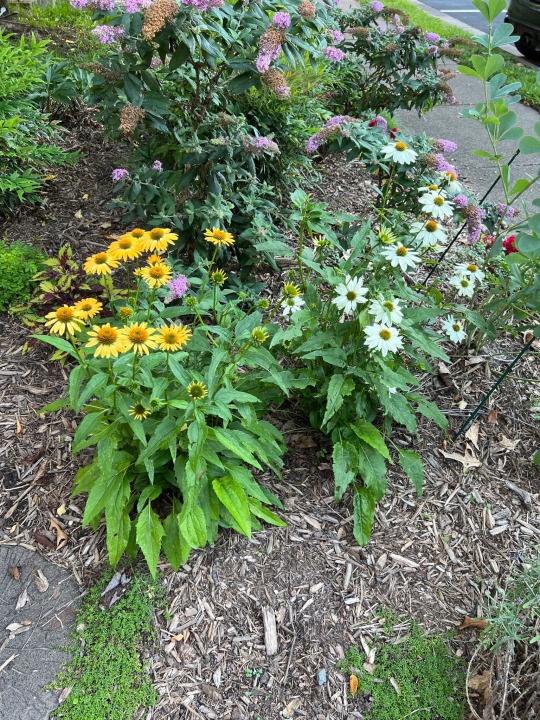
11 July 2023
There always seems to be a bit of a pause at the end of June, then things kick into gear again mid-July. Above, yellow and white coneflowers in the front.

Sunflowers have started their rapid growth stage.


Buds on the delphinium! It didn’t bloom last year. And the cardinal flower grew about two feet in the last week and is almost the same height as the asters (which I will definitely need to prune this fall).

Hibiscus

First few flowers in the perennial sunflower. It is a beast this year.

So is the Joe Pye weed. Look at the height it’s got!
6 notes
·
View notes
Text
Native Plants I’ve Actually Seen Growing Wild in Southern Ontario
Acer saccharinum (silver maple) --along the sides of highways
Acer saccharum (sugar maple) --GTA ravines
Achillea millefolia (yarrow) --GTA ravines
Allium schoenoprasum (wild chives) --GTA ravines, Ridgetown
Allium tricoccum (ramps) --Niagara region escarpments
Amaranthus retroflexus (redroot amaranth) --fallow areas in the GTA
Ambrosia artemisiifolia (ragweed) --fallow areas in the GTA
Ambrosia trifida (giant ragweed) --parks in the GTA
Amelanchier spp. (saskatoon/serviceberry) --GTA ravines
Arisaema triphyllum (Jack-in-the-pulpit) --GTA ravines
Aronia melanocarpa (black chokeberry) --ravines and parks in the GTA
Asarum canadense (Canada ginger) --GTA ravines
Asclepias syriaca (common milkweed) --fallow areas, ravines, and parks throughout southern Ontario from Windsor to GTA
Asplenium trichomanes (maidenhair spleenwort) --Niagara region escarpments
Betula spp. (birch) --ravines and parks throughout southern Ontario from Windsor to GTA
Bidens spp. (beggar ticks) --GTA ravines
Caulophyllum thalictroides (blue cohosh) --GTA parks
Ceratophyllum demersum (hornwort) --GTA ravines (native in freshwater across the globe anyway)
Circaea lutetiana (enchanter’s nightshade) --fallow areas in the GTA
Commelina spp. (dayflower) --fallow areas in Windsor
Cornus alternifolia (Pagoda dogwood) --GTA wooded areas
Cornus sericea (red osier dogwood) --GTA ravines and in Windsor riverside parks
Crataegus spp. (hawthorn) --GTA ravines and parks
Echinocystis lobata (wild prickly cucumber) --GTA ravines
Elaeagnus commutata (silverberry) --GTA parks and fallow areas
Epilobium ciliatum (fringed willowherb) --fallow areas in the GTA
Equisetum spp. (horsetail/scouring rush) --GTA ravines and fallow areas
Erigeron spp. (fleabane) --GTA parks and fallow areas, Ridgetown
Erythronium americanum (trout lily) --GTA ravines and parks
Eutrochium maculatum (Joe-Pye weed) --GTA parks
Fragaria virginiana (wild strawberry) --fallow areas in the GTA
Geranium maculatum (wild geranium) --Windsor green spaces
Geranium robertianum (herb robert) --Windsor green spaces
Geum aleppicum (yellow avens) --GTA fallow areas
Geum canadense (white avens) --GTA fallow areas
Geum macrophyllum (large-leaved avens) --GTA fallow areas
Gymnocladus dioicus (Kentucky coffee tree) --GTA ravines
Helianthus spp. (sunflower) --GTA fallow areas and parks
Heracleum maximum (cow parsnip) --GTA ravines
Hordeum jubatum (foxtail barley) --GTA fallow areas
Humulus lupulus (hops) --GTA ravines
Hydrophyllum virginianum (Virginia waterleaf) --GTA ravines
Impatiens capensis (jewelweed) --GTA ravines and in Windsor riverside parks
Juglans nigra (black walnut) --GTA ravines
Lactuca canadensis (Canadian lettuce) --GTA fallow areas
Lilium michiganense (Michigan lily) --GTA ravines
Lupinus perennis (sundial lupine) --GTA parks
Maianthemum canadense (Canada mayflower) --GTA ravines
Maianthemum racemosum (starry false solomon’s seal) --GTA ravines and parks
Maianthemum stellatum (starry false solomon’s seal) --GTA ravines
Matteuccia struthiopteris (ostrich fern) --GTA ravines
Monarda fistulosa (wild bergamot) --GTA ravines and parks
Morus rubra (red mulberry) --fallow areas in Windsor, GTA parks
Myosotis laxa (smallflower forget-me-not) --GTA fallow areas
Oenothera biennis (evening primrose) --GTA fallow areas
Onoclea sensibilis (sensitive fern) --GTA ravines
Oxalis stricta (yellow wood sorrel) --fallow areas and ravines throughout southern Ontario from Windsor to GTA
Parietaria pensylvanica (Pennsylvania pellitory) --GTA fallow areas
Parthenocissus quinquefolia (Virginia creeper) --Windsor fallow areas and GTA ravines and parks
Persicaria lapathifolia (curlytop smartweed) --GTA fallow areas
Podophyllum peltatum (mayapple) --GTA ravines and parks
Portulaca oleracea (purslane) --fallow areas throughout southern Ontario from Windsor to GTA (native globally anyway)
Potentilla norvejica monspeliensis (ternate-leaved cinquefoil) --GTA fallow areas
Prunella vulgaris (selfheal) --fallow areas and ravines throughout southern Ontario from Windsor to GTA
Prunus virginiana (chokecherry) --Windsor fallow areas, GTA ravines and parks, Niagara region escarpments
Pteridium aquilinum latiusculum (western bracken fern) --GTA parks
Quercus spp. (oak) --wooded areas throughout southern Ontario from Windsor to GTA
Rhus typhina (staghorn sumac) --parks and fallow areas throughout southern Ontario from Windsor to Collingwood
Ribes spp. (currants) --GTA ravines and parks
Ribes spp. (gooseberries) --GTA ravines
Robinia pseudoacacia (black locust) --GTA ravines and parks
Rosa spp. (roses) --GTA ravines, parks, and fallow areas
Rubus occidentalis (black raspberry) --ravines, parks, and fallow areas in Hamilton and GTA
Rubus odoratus (purple-flowered raspberry) --GTA ravines and parks
Rubus strigosus (American red raspberry) --GTA parks
Rudbeckia hirta (black-eyed susan) --GTA parks
Salix spp. (willow) --GTA ravines
Sambucus canadensis (common elderberry) --Windsor riverside parks, GTA ravines
Sambucus racemosa (red elderberry) --GTA ravines and parks
Smilax spp. (greenbrier) --GTA parks
Solidago canadensis (Canada goldenrod) --parks and fallow areas throughout southern Ontario from Windsor to GTA
Sorbus spp. (mountain ash) --GTA ravines and parks
Streptopus spp. (twistedstalk) --GTA parks
Symphoricarpos spp. (snowberry) --GTA parks
Symphyotrichum ericoides (heath aster) --fallow areas throughout southern Ontario from Windsor to GTA
Symphyotrichum novae-angliae (New England aster) --fallow areas throughout southern Ontario from Windsor to GTA
Symplocarpus foetidus (skunk cabbage) --GTA parks
Tilia spp. (linden) --GTA ravines
Trillium grandiflorum (white trillium) --parks throughout southern Ontario from Windsor to GTA
Tsuga canadensis (eastern hemlock) --GTA parks
Typha latifolia (broad-leaved cattail) --marshes in Essex county and GTA
Urtica gracilis (slender nettle) --GTA ravines
Uvularia spp. (bellwort) --streams in Windsor green spaces
Verbena hastata (blue vervain) --GTA ravines
Viburnum lentago (nannyberry) --GTA parks and Ridgetown ravine
Viburnum trilobum (highbush cranberry) --Ridgetown
Viola sororia (wood violet) --fallow areas and wooded areas throughout southern Ontario from Windsor to GTA
Vitis riparia (riverbank grape) --GTA fallow areas, ravines, and parks
Waldsteinia fragarioides (barren strawberry) --GTA ravines and parks
Xanthium strumarium canadense (Canada cocklebur) --GTA parks and fallow areas
I’ve likely seen many others and just couldn’t identify them, but there are a lot I’ve never seen growing wild. What I’m hoping is that some of the native species I have in my garden will make their way to the nearby ravine. If I get around to it, though, I might just take a walk with some Asclepias incarnata (swamp milkweed) seeds in the fall. They certainly seem to successfully germinate in my garden whether I want them to or not (don’t have space for them to go crazy). Can’t see why they wouldn’t in a natural swamp area.
#text post#long text post#native plants of Ontario#native plants of North America#wild native plants
10 notes
·
View notes
Text
Today at Buffalo Creek Wildlife Preserve
After a long day of counting plants for my masters class project, and my partner doing ecological restoration work, both outdoors, both very sweaty, we decided to kick back and relax after dinner by identifying as many plants at a wildlife preserve as we could.
Before that, here is a list of the animals we saw while looking at the plants:
-Canada Geese
-Mallard ducks
-Swallow (tree?)
-Sparrow (spp. unsure)
-Redwing blackbirds
-Goldfinches
-Snowy egrets
-Great Blue heron
-Sandhill cranes
-Ladybugs* (ladybug larva?)
-Japanese beetle*
-Stinkbug (spp.?)
-Milkweed bug :)
-Monarch butterfly
-Muskrat
-Deer
-Bunnies!
-Little mouse/vole guy
Here is a list of plants (I'll start with the plants I added to iNat and then the other ones from memory); we did not attempt to identify most grasses/sedges/trees, this is mostly prairie plants and is not a complete list of plants in the region. I will include a little "?" for plants that we couldn't 100% determine or were only recommended through iNaturalist, and an asterisk for plants that are not native.
-false sunflower
-wild bergamot
-sawtooth sunflower
-purple prairie clover
-butterfly milkweed
-stiff-leaved goldenrod
-white campion*
-prairie crab apple (?)
-common milkweed
-common yarrow
-hackberry
-cottonwood
-queen anne's lace*
-oxeye daisy
-annual fleabane*
-prairie dock
-wild white indigo
-illinois bundleflower
-red clover*
-virginia mountain mint
-american senna
-rough cocklebur (*?)
-joe-pye weeds
-orange day-lily*
-ironweed
-oak (various)
-white sweetclover*
-yellow sweetclover*
-compass plant
-gray-headed coneflower/yellow coneflower
-purple coneflower
-cut-leaved teasel*
-canada thistle*
-bull thistle*
-birdsfoot trefoil*
-crown vetch*
-reed canary*
-big bluestem
-chicory*
-burdock*
-curly dock*
-cattails (may or may not be native*)
-vervain
-cup plant
-ragweed
-cut-leaved coneflower
-giant ragweed
-dogwood
-dogsbane
-tall goldenrod
-grass-leaved goldenrod
-virginia strawberry
-elm (?)
-prairie rosinweed
-orchard grass (?)*
-timothy grass (?)*
-switchgrass
-redtop
It was nice and late in the afternoon, cloudy, and there was rain forecasted but it didn't come until we were leaving (and even then it was barely drizzling). Overall we saw a lot of plants and animals! :)
3 notes
·
View notes
Note
Hey! I love your blog so much, and I'm so happy that I found it (it's helped a lot)!
I was wondering if you could do a list of flowers that mean (or fall into the category of/are similar to):
Obsession, Obsessive love, 'til death do us part, I want your attention, I belong to you, you belong to me, etc., etc.
Along with this, I'd also like to know what flowers are native to New Jersey (And also which ones bloom in the fall, if any?)
Thank you, and have a lovely day!
That should be possible with some creativity given that obsession and bonding don’t exist as meanings themselves, but it leans well enough into the Victorian flower language to get something out of it still. Hope there’s something in here that works for your story.
arbor vitae – live for me, unchanging friendship
baby’s breath – everlasting love, innocence, pure of heart
bay leaf – I change but in death/dying
broom-rape – union
carnation (pink) – I will/I’ll never forget you, women’s love
cedar leaf – I live for thee
clover (white) – think of me
columbine – I cannot give thee up, folly, desertion
columbine (purple) – resolved to win
cowslip (american) – divine beauty, you are my angel, you are my divinity
currant – thy frown will kill me, thankfulness
daisy (double) – affection, I reciprocate your affection
daphane (rose) – I desire to please
eschscholzia – do not refuse me
euphorbia – persistence
fleur-de-lis – I burn, flame
foxglove – I am not ambitious for myself but for you, a wish, stateliness, occupation, insincerity, youth
furze – love for all seasons/occasions
gladiolus – you pierce my heart, generosity, I’m sincere, flower of the gladiators
heart’s ease – you occupy my thoughts, forget me not, think of me, thoughts
heart’s ease (purple) – you occupy my thoughts
hemlock – you will be my death
honeysuckle – generous and devoted affection, bonds of love, the bond of love, devotion, I would not answer hastily, fidelity
honeysuckle (coral) – the colour of my fate
honeysuckle (wild) – generous and devoted love
japonica – sincerity, symbol of love
jasmine (indian) – I attach myself to you, attachment, separation
laurestine – a token, I die if neglected, delicate attention
mallow (syrian) – consumed by love, persuasion
rose (carolina) – love is dangerous
shepherd’s purse – I offer you my all
spindle tree – your charms are engraven on my heart
tulip – (a) declaration of love, perfect lover, fame, beautiful eyes
tulip (red) – declaration of love
virginia creeper – I cling to you both in sunshine and in shade
Plants native to New Jersey that bloom in fall/autumn:
allegheny monkey flower
american angelica
american arrowhead
american blue vervain
american lotus
american water-willow
ashy sunflower
bigleaf aster
black-eyed susan
bluebell
blue bead lily
blue cohosh
blue mistflower
blue star
blue wood aster
bottle gentian
bowman’s root
brown-eyed susan
bunchberry
bushy aster
canada goldenrod
canada wild ginger
canadian violet
cardinal flower
carolina geranium
caroline redroot
closed bottle gentian
coastal plain joe-pye weed
common boneset
common evening primrose
cow parsnip
crooked aster
cutleaf coneflower
cup plant
downy skullcap
early goldenrod
false aster
false sunflower
field thistle
flat-topped white aster
foam flower
fringed bleeding heart
fringed loosestrife
gayfeather
golden crownbeard
grass-leaved goldenrod
grassy arrowhead
gray goldenrod
great blue lobelia
hairy aster
hardy hibiscus
heath aster
hoary vervain
horizontal calico aster
jerusalem artichoke
joe-pye weed
late boneset
marsh betony
maryland golden aster
maximilian sunflower
meadow phlox
narrowleaf mountain mint
new england aster
new york aster
new york ironweed
nodding lady’s tresses
orange fringed orchid
orange jewelweed
patridge pea
pearly everlasting
pink tickseed
prairie sagebush
purple-head sneezeweed
purple mountain saxifrage
red baneberry
rock harlequin
rough goldenrod
salt heliotrope
sawtooth sunflower
scarlet bee balm
seashore mallow
seaside goldenrod
selfheal
showy black-eyed susan
showy goldeneye
showy goldenrod
showy tick trefoil
slender buch clover
slender dayflower
smooth beggartick
smooth blue aster
sneezeweed
spotted joe-pye weed
stiff goldenrod
stiff sunflower
swamp sunflower
swamp thistle
sweet goldenrod
sweetscent
sweet-scented joe-pye weed
tall boneset
tall cinquefoil
tall goldenrod
ten-petaled sunflower
threadleaf coreopsis
tickseed
virginia meadow beauty
water arum
western sunflower
wild bergamot
wild cucumber
wild potato vine
wild senna
wingstem
white baneberry
white goldenrod
white panicle aster
white snakeroot
white turtlehead
white wood aster
whorled milkweed
woodland sunflower
wreath goldenrod
yellow jewelweed
yellow pond lily
This website gives a breakdown by county in form of excel lists, albeit it doesn’t say whether the plants bloom in fall or not.
https://npsnj.org/native-plants/where-to-buy-natives/plant-lists/
– Mod Jana
Disclaimer
This blog is intended as writing advice only. This blog and its mods are not responsible for accidents, injuries or other consequences of using this advice for real world situations or in any way that said advice was not intended.
https://www.gardenia.net/native-plants/new-jersey
#flower language#gardening#writing advice#victorian flower language#obession#obessive love#feelings of love#attention#you belong to me#I belong to you#mod jana#ask answered
18 notes
·
View notes
Text
Summer Wild Flowers! (Wetlands)
Hey, haven’t done one o’ these in a while. Had a nice hike over the wetlands and fields. Here are some common and rare wild flowers you can find (in mid/north eastern USA)
-------------------------
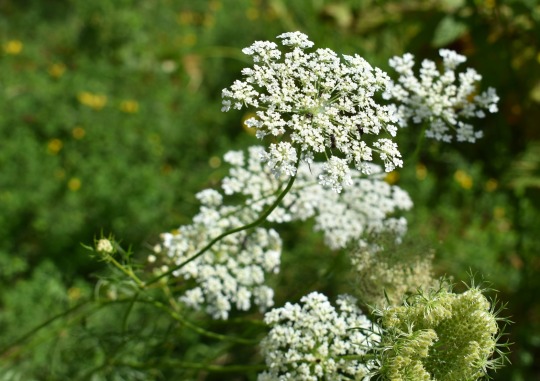
Queen Anne’s Lace (or Wild Carrot)
Very common in fields and on road sides. Attracts many pollinators, but those with sensitive skin can get rashes when handling the raw plant. The ‘basket’ of flowers are much more dense than its bad relatives (water and poison hemlock) and also has the tell tale red/purple dot at the center.
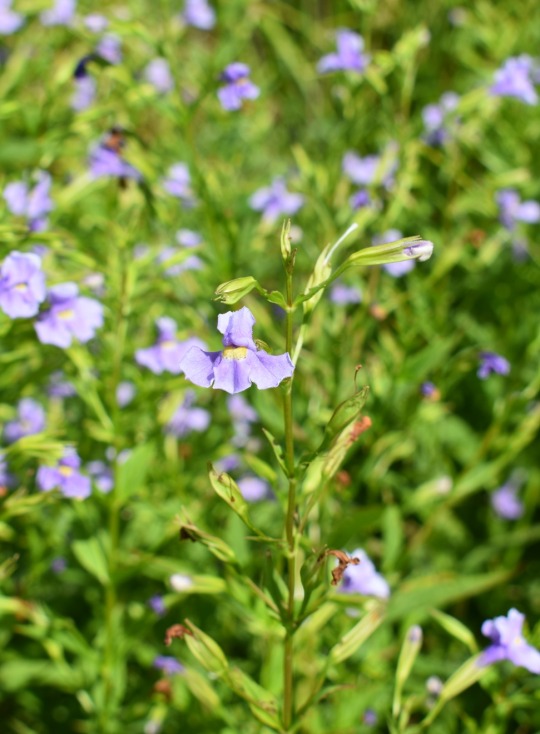
Monkey Flower
The mature flower is supposed to look like a monkey’s head (I don’t see it). Grows in little colonies and likes wet open fields. Is actually considered endangered in many areas.
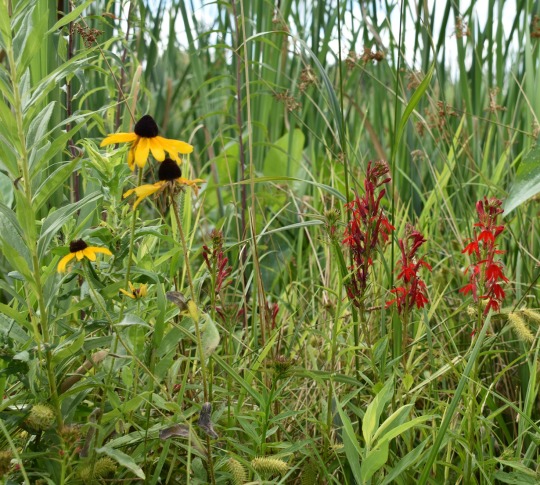
Cardinal Flower (with Black Eyed Susans and Cat Tails)
A striking wild flower with nothing coming close to its bold red color. Good for attracting butterflies, however it is rather rare in public areas due to humans picking it because of its unique look.

Swamp Milkweed
There are three main milkweeds in this area but this one flowers last. Also known as Narrow Leaf, I believe. Amazing food source for pollinators in wetlands. Easy way to tell a milk weed is to rip off a tip of a leaf - if a milky white sap comes out, it’s probably a milkweed.

Joe Pye Weed
A bold and very tall field and wetland plant. Loved by butterflies (that’s a Tiger Swallow Tail). Seen as a cumbersome weed in larger properties so it can become rare. Grows very tall (10 feet) and one of the few tall plants with a whorled leaf pattern.
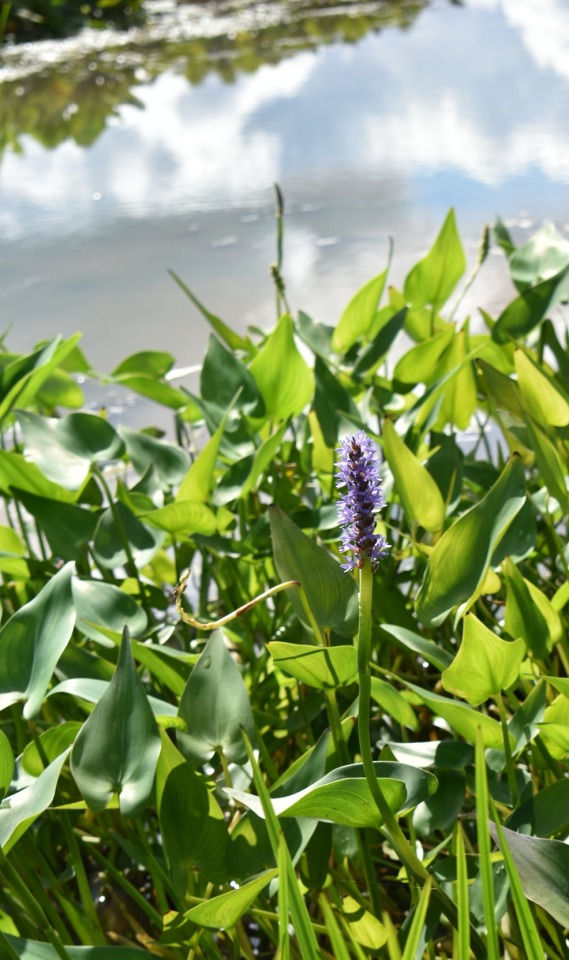
Pickerelweed
There are quite a fer large, showy water plants that will grow in shallow wetlands or along small lakes or streams. Arrow Weed looks very similar but has a small white flower, Spadder Dock has much broader leaves and a pod like yellow flower. Other water plants such as lilies have more flat flowers. Pickerelweed is the most bold with a series of tall stalks of purple flowers. Even birds will feed from it!
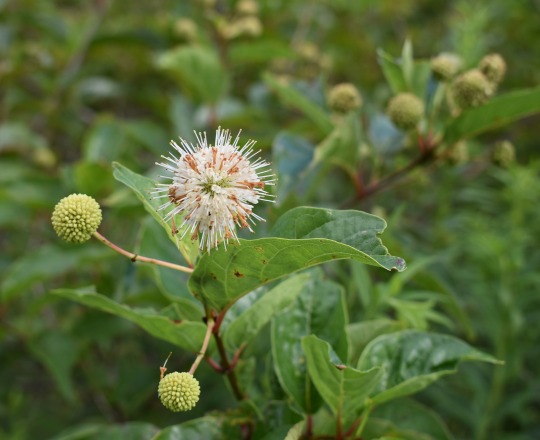
Button Bush
Ok, I cheated. This is a water loving bush. Called the Covid Flower by my mom, the Button Bush has cute spherical flowers that pop up all over the ends of the branches. Common and beautiful.

Chicory
A weed you will see on the sides of roads and in fields or waste sites in abundance. Pretty easy to ID due to it being a thick ‘stem’ with a series of light purple flowers and not really any large leaves. This weed has a secret as all of it is edible and can be used to help with various medical issues.
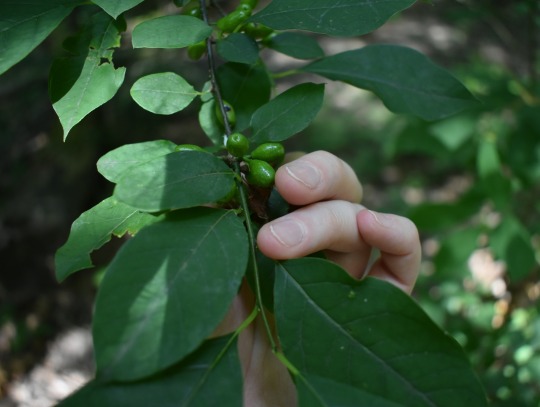
Spice Bush (female)
Aaaand another bush! My favorite! The only common alternate leaved bush in the area, the Spice Bush can either be male or female, with the female growing flowers and eventually berries that go from green to red. Said berries can be pitted and dried and crushed to make an allspice like powder. The leaves also have the wonderful smell too! Fairly common and easy to ID due to the bright stems on the leaves.
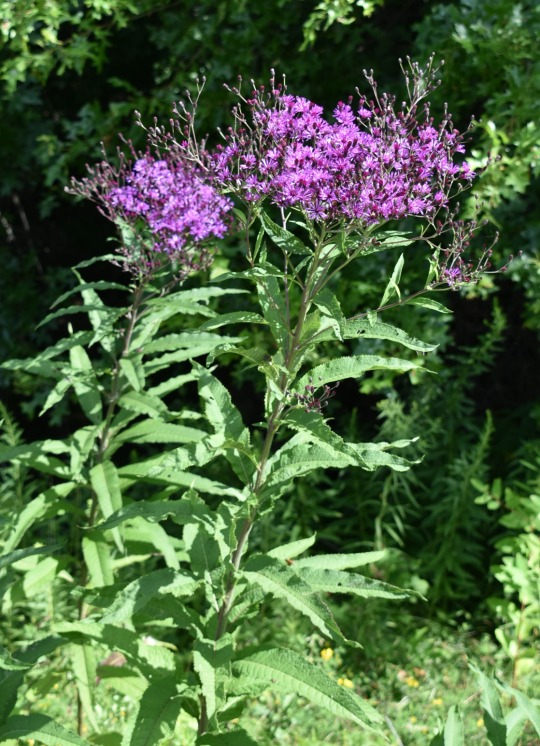
Tall Iron Weed
This field plant can grow up to 10 feet tall. Similar to Joe Pye Weed but with a different leaf pattern. Also loved by butterflies and bees. Will grow in clumps. Also sees as an annoying weed in fields and large properties, but flourishes in parks.
#plants#nature#wetlands#iron weed#joe pye weed#wild carrot#i didnt get any blazing star#this is an incomplete list#i will find more#weee
5 notes
·
View notes
Photo

I'm happy to share another new work, Sanctuary. It's one of the quilts making its debut at the Virginia Quilt Museum in my solo show, Beyond the Blue: Contemporary Narrative Quilts by Sue Reno. The exhibit runs from August 16 - October 23, with a reception on September 23. I am particularly fond of the small rock crevices and caves commonly found in the geological formations in Pennsylvania. They form a sanctum sanctorum for all sorts of creatures, from invertebrates burrowing in the leaf litter, to snakes in hibernacula, and small mammals seeking shelter from the elements. There's a few in Lancaster County where I've ventured a short distance inside, to feel the cool air on my skin while on a summer hike. The eastern woodlands always feel like an sanctuary to me. I can identify a good number of the trees and plants around me, and can fantasize which ones I would use for food and shelter should the need somehow arise. I live in suburbia and the need is not at all likely to arise, but combined with my gardening skills I am appeasing the spirits of my Germanic ancestors who did indeed live off of the land. The knowledge puts me at ease. Like all of my work it has specific meaning to me, but I have left it open ended enough so that the viewer can bring their own story to the experience. The leaves in this wet cyanotype print are catalpa, green ash, red oak, sassafras, white oak, Joe Pye weed, and maple. I added the leaf veining with stitching, then quilted the background with "pebble" quilting that reminds me of a gentle rain falling. The patchwork is a mélange of cotton and silk fabrics. meant to symbolize earth and sky. Size is 37" x 55" #artquilt #fiberart #textileart #wetcyan #wetcyanotype #blueprint #printmaking #botanicalprintmaking #altphotography @vaquiltmuseum @saqaart @aap_pgh (at Virginia Quilt Museum) https://www.instagram.com/p/ChKdbJ0OHSA/?igshid=NGJjMDIxMWI=
#artquilt#fiberart#textileart#wetcyan#wetcyanotype#blueprint#printmaking#botanicalprintmaking#altphotography
0 notes
Photo



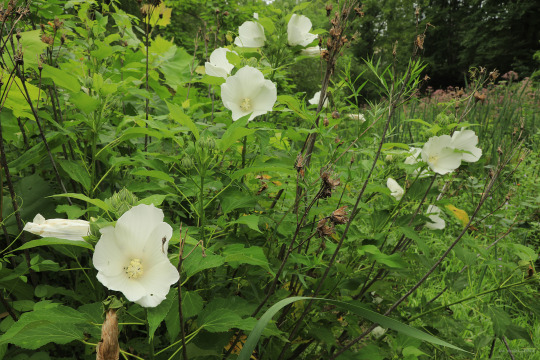





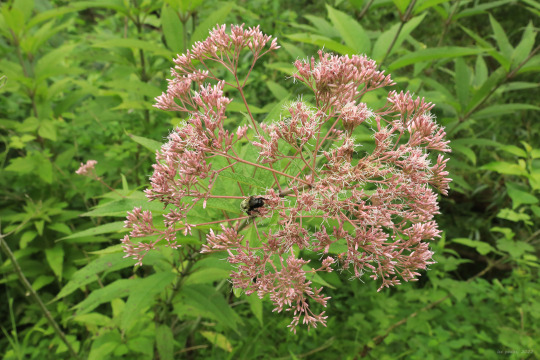
I stopped by the reservoir at White Park yesterday to photograph the rose mallow (Hibiscus moscheutos), sometimes referred to as swamp rose-mallow, which is now at peak bloom. This is a healthy and vigorous wetlands community visited by great blue and little green herons, kingfishers, a variety of ducks, and the occasional osprey - all the more remarkable because it’s within walking distance of downtown Morgantown. Anyway, the rose mallow was fabulously beautiful in its various shades of crimson red, pink, and white, and the hollow Joe Pye weed (Eutrochium fistulosum) was equally impressive, presiding over its wetlands kingdom with the massive lavender crowns of true kings.
From top: rose mallow, whose flowers display high variability in color and petal sizes/orientations (although some specimens may be hybrid escapees, this plant nonetheless possesses some wild genetic impulses); wild mint (Mentha arvensis), a cosmopolitan mint with a strong flavor and an affinity for wetlands; Allegheny monkeyflower (Mimulus ringens), a whimsical perennial that forms dense stands in swamps and along streambanks; seedbox (Ludwigia alternifolia), so named because of the four-sided shape of its seed capsules; and without further adieu, a true king bowed under the weight of its elegant crown.
#appalachia#vandalia#west virginia#summer#flora#wildflowers#wetlands#white park#morgantown#hibiscus moscheutos#rose mallow#swamp rose-mallow#mentha arvensis#wild mint#mimulus ringens#allegheny monkeyflower#ludwigia alternifolia#seedbox#rattlebox#eutrochium fistulosum#hollow joe pye weed
80 notes
·
View notes
Text
November 2021: The Last Sunday







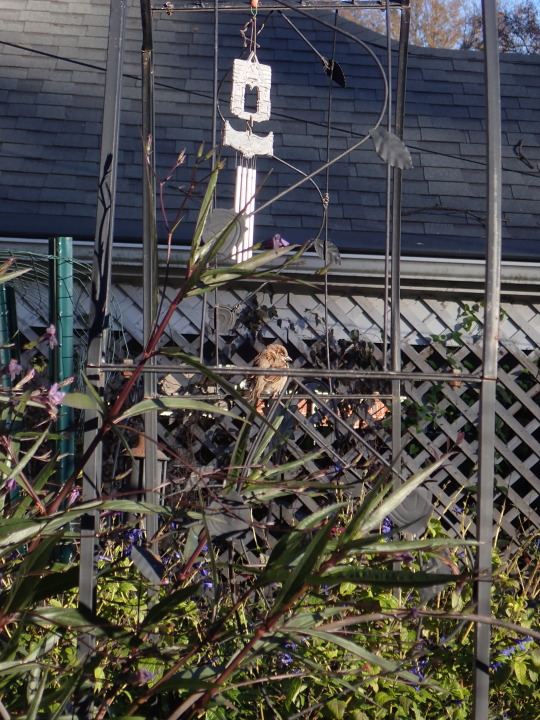
The lacewing & the egg:







Our neighbors’ live oaks:

The world’s most optimistic aphid:
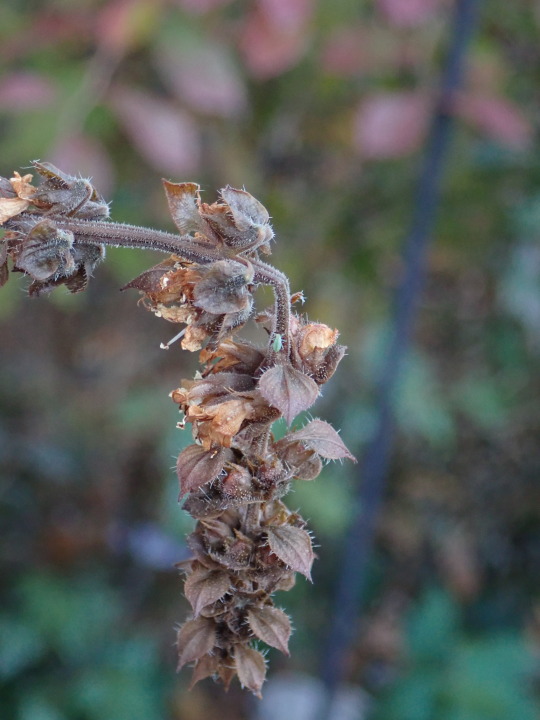
#garden#backyard garden#flowers#blue salvia#honeybee#blue sky#sun#clouds#asian lady beetle#joe pye weed#japanese maple#yoshino weeping cherry#house sparrow#green lacewing#lacewing egg#white-throated sparrow#carolina chickadee#oak trees#basil#aphid#life in memphis
5 notes
·
View notes
Photo



Eutrochium purpureum (Purple Joe-Pye weed)
The North American genus Eutrochium includes all the species typically referred to as Joe-Pye weed. Most species are purple but a few show white flowers instead. Often regarded as roadside weeds on the Eastern side of the continent, a number of garden ornamentals have been produced. It blooms from mid-summer to early autumn and butterflies love it. Although five species are sold as Joe-Pye weed, this particular species (Eutrochium purpureum) has a lovely scent and is sometimes called Sweet scented Joe-Pye weed. Joe-Pye weed is a bold, architectural plant in a garden setting, often exceeding six feet (2 meters) in height.
The real Joe Pye was a Mohican sachem (shaman) named Schauquethqueat who lived in the mission town of Stockbridge, Massachusetts from c. 1740 to c. 1785 and who took as his Christian name, Joseph Pye. He used this plant as a herbal medicine to cure fevers but it had many traditional uses and over a hundred have been documented. For example, the Cherokee used the ash of Purple Joe-Pye weed roots as a salt for flavoring foods, and the Ojibwa used a strong tea made of the root as a strengthening wash for infants.
#flowers#photographers on tumblr#Joe-Pye weed#wildflowers#gardening#fleurs#flores#fiori#blumen#bloemen#Vancouver
80 notes
·
View notes
Text
English Borders - The Next Generation
In July the next generation of blossoms arrived to form the white-pink-blue colour triad of my two English borders. For pink the main player is the purple conehead (Echinacea purpurea), for white it´s the Korean mint (Agastache rugosa “Alabaster”) and for blue another Korean mint (Agastache rugosa “Black Adder”).

Crimson beebalm (Monarda didyma) (below, left) and round-headed leek (Allium sphaerocepahlon) (above, left) add more pink. The candle-like inflorescences of the Korean mint last very long and smells strongly of fresh mint (above, right), thus attracting a lot of various bees and bumblebees. The coneflowers (below, right) are especially beloved by butterflies.

Evening light makes the Korean mint glow in soft red hues (above, left). Purple Joe-Pye weed (Eupatorium purpureum) (above, right) and great masterwort (Astrantia major) (below, left) add to the pink colour.
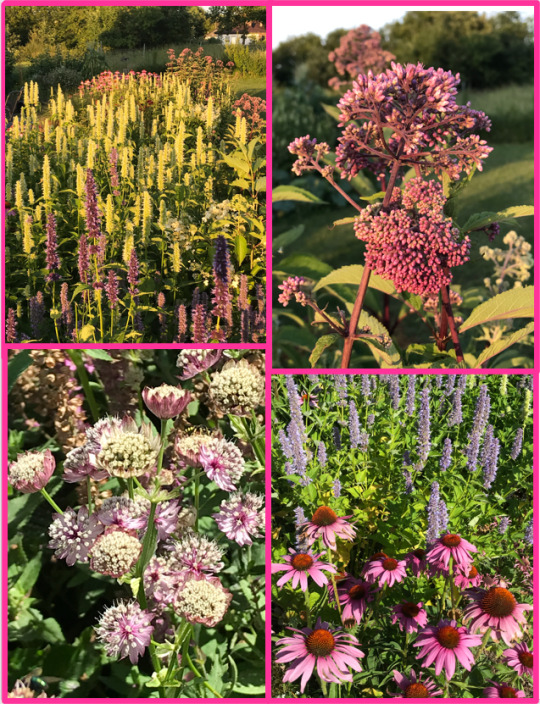
5 notes
·
View notes
Text
She loves the fall. She loves it for the wind, for the cool gusts that blow her hair into her face and whip the clouds into horses’ tails, that shake the leaves off the tree and make the wildflowers dance in the breeze. She loves it for the clear, blue sky, how it feels like the high ceiling of a grand castle, a vast sea of cobalt that stretches on and on and on. She loves it for the night, when the air chills and the moon emerges and the stars hang in the sky like a rich blue-black tapestry filled with small pinpricks of light, almost close enough to reach out and touch. She loves it for the smell of the ripe wild grapes, their fragrance intoxicating as they dangle, round and perfect and just brushed with the season’s first frost, on the long, curling grapevine that creeps up the oak tree. She loves it for the harvest, for the round, green pears wet with morning dew, for the crisp, honey sweet apples and the flaming pumpkins large as wheelbarrows. She loves it for the dragonflies that flit about on warm afternoons, soaking up the sunshine as their wings flash and glitter; she loves it for the monarchs on the spotted joe-pye-weed, opening and closing their wings gently as they rest before their journey south; she loves it for the ladybugs that emerge in droves, crawling on her hand and clad in ruby and tangerine and beautiful amber gold. She loves it for the hawk who flies high above her, soaring endlessly on steady wings as the drafts of cool fall breezes ruffle its warm brown coverts, letting out a piercing shriek that hangs forever in the air, like the thrill she always feels as she watches it. She loves it for the fox in the meadow that comes out when the day wanes and evening comes, rustling the tall grass as it disappears with a flick of its thick, bushy tail, a smear of brown in the golden field. She loves it for the hikes into the mountain, the tranquility of the leaf strewn trail as she climbs higher, higher, higher still, and the view from the top when she feels like she is the only person in the world. She loves it for the leaves and the colors they turn as the weather grows cool, as though they have been painted with an artist’s brush dipped in fire, filled with dark browns and sunny yellows, flaming scarlets and tiger oranges, and the feeling that they’ve done it just for her, just so she can stand in wonder and drink it all in. She loves it for the last burst of fall flowers, for the hillsides covered in purple asters and yellow goldenrods, for the old stone bridge engulfed by red honeysuckle and palatinate purple pokeweed, as though they have put all their energy into this moment, this wonderful burst of sight and smell. She loves it for the way the wheat turns golden yellow and rustles when she walks through it and the hum of the tractor as it treads slowly through the dirt and the vibrancy of the hills and the twisting vines turning brown and gold and the red-purple grass and the dancing white wildflowers, and for all the vivid colors and scents and sounds that intoxicate her with their beauty.
She loves the fall, because it feels like a celebration.
~~~
Feedback is welcome and appreciated! <3
Seasons: summer
#biscuit writes#write-blr#writeblr#my writing#fall#autumn#fall vignette#autumn vignette#vignette#short story#autumn short story#seasons#writers on tumblr#short story vignette#short story writing#thoughts#fall aesthetic#autumn aesthetic
6 notes
·
View notes
